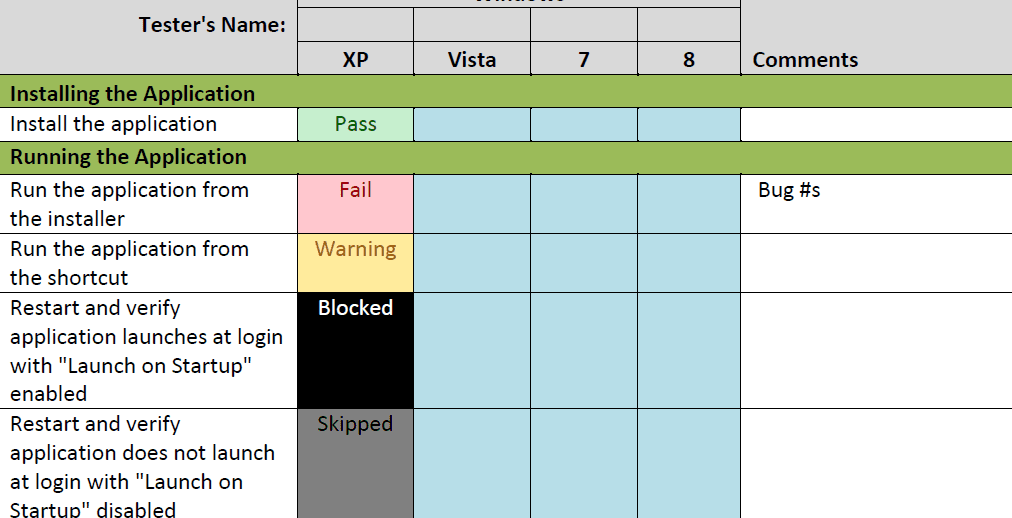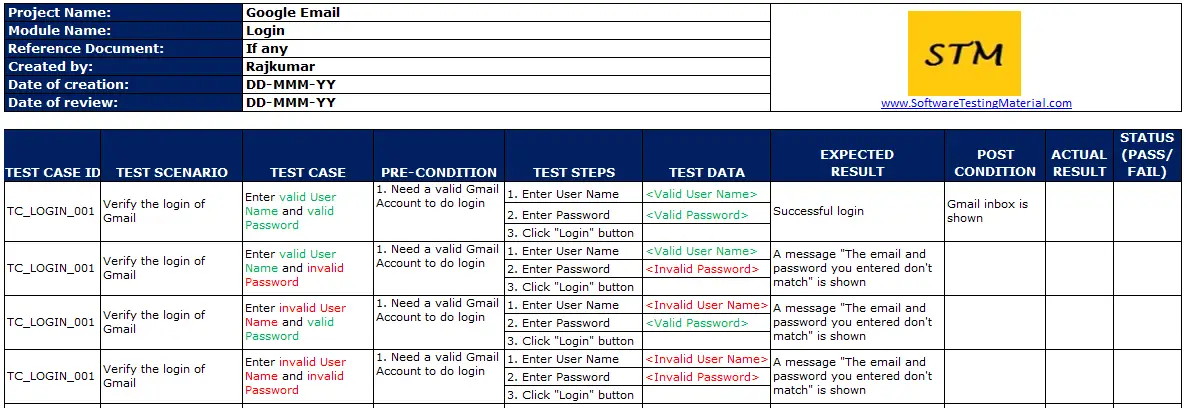Example Of A Test Case - If you're involved in software testing or quality assurance, you probably already know that test cases are an essential part of the process. They are used to validate that software meets the requirements of the specification and to ensure that it is free from errors or defects. In this post, we'll be discussing what test cases are, how to write them, and some examples of templates you can use.
What Are Test Cases?
Test cases are essentially a set of steps or instructions that are used to validate whether a particular feature or function of software works as expected or not. They are created in advance of the testing process and are based on the requirements and specifications of the software.
Why are they important?
Test cases are important because they ensure that the software being tested is free from defects, errors, and bugs. They outline what testing needs to be done and ensure complete coverage. Test cases can also help save time, money, and resources by identifying issues early in the development process.
How To Write A Test Case
The creation of a good test case is not rocket science. There are some basic steps to follow:
Step 1: Identify the Test Objective
Knowing the purpose and objective of the test case is important because it will guide the creation process.
Step 2: Choose Your Test Conditions
Determine the conditions that would trigger the test in normal scenarios, such as user input or system output.
Step 3: Define The Pre-Condition
The pre-condition is the state of the system or application before the test is executed, for example, the user is logged in or the application is open.
Step 4: List Down Test Steps
This is where you specify the procedures involved in carrying out the test case. It should be clear, concise and easily understandable. A list, table or flowchart can be used to represent the test steps.
Step 5: Define The Expected Result
The expected result indicates what the outcome of the test case should be. This will be the basis for determining whether the test case has passed, failed, or remained inconclusive.
Step 6: Review and Refine Your Test Case
You must always review your test case to ensure it covers all possible scenarios and that it meets the test objectives.
Test Case Examples
Here are a few different test case examples for reference.
Example 1: Login to Application

- Test Objective: To check if the user is able to login to the application using valid credentials.
- Test Conditions: User has an account and has already registered with the application.
- Pre-Condition: The user is not already logged in.
- Test Steps:
a. Open the application login screen.
b. Enter the valid username.
c. Enter the valid password.
d. Click on the 'Login' button.
- Expected Result: The user should successfully log into the application and be directed to the dashboard page.
Example 2: Search Functionality

- Test Objective: To ensure that the search functionality of the application is working correctly.
- Test Conditions: The application has a search bar and can retrieve and display results.
- Pre-Condition: The user has logged in to the application.
- Test Steps:
a. Open the search bar.
b. Enter the keyword to search.
c. Click on the search button.
- Expected Result: The result page should be displayed with the relevant content matching the keyword entered.
Example 3: Register User

- Test Objective: To check if the user is able to register with the application using valid credentials
- Test Conditions: User is not already registered with the application.
- Pre-Condition: The user is not logged into the application.
- Test Steps:
a. Open the registration page.
b. Enter the valid username.
c. Enter the valid email address.
d. Enter the valid password.
e. Click on the 'Register' button.
- Expected Result: The user should be successfully registered and directed to the login page.
Tips, Ideas And How To
Here are some tips to help you write better test cases:
- Use clear and concise language that everyone can understand.
- Include detailed and relevant descriptions of each test case.
- Make sure that the test cases are aligned with the requirements and specifications of the software.
- Include both positive and negative test cases.
- Make sure that the test cases cover all possible scenarios, edge cases and negative scenarios.
- Make sure that the test cases cover all functionalities of the software that need to be tested.
- Use a consistent format for all test cases to make it easier to manage and track them.
- Periodically review and refine your test cases to ensure they remain accurate and up-to-date.
- Collaborate with your team members and stakeholders to ensure alignment with the objectives of the software project.
By following these tips, you can create effective test cases that help you to identify any issues early on in the development process, save time and resources, and ensure that the software meets the criteria and objectives of the project.
In conclusion, test cases are an essential part of the software testing process. They help to ensure that software meets the specifications and requirements set out for it, and are used to identify any issues or defects that might exist. By following the steps outlined in this post, and using the tips and examples provided, you can create effective test cases that will help you to achieve your testing objectives with ease.Read more articles about Example Of A Test Case


